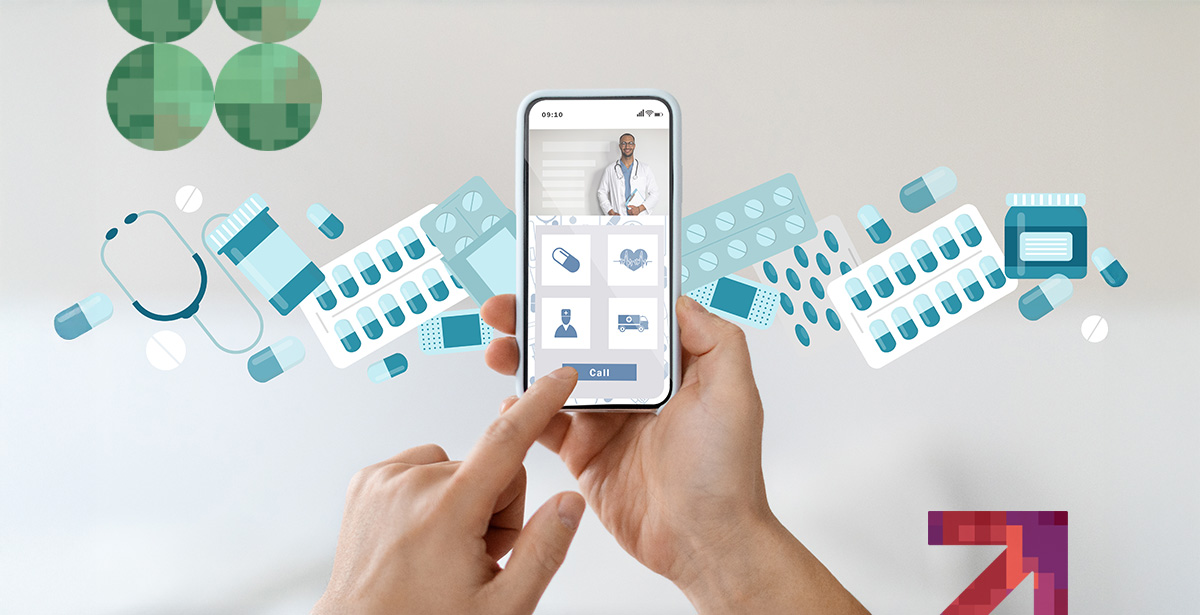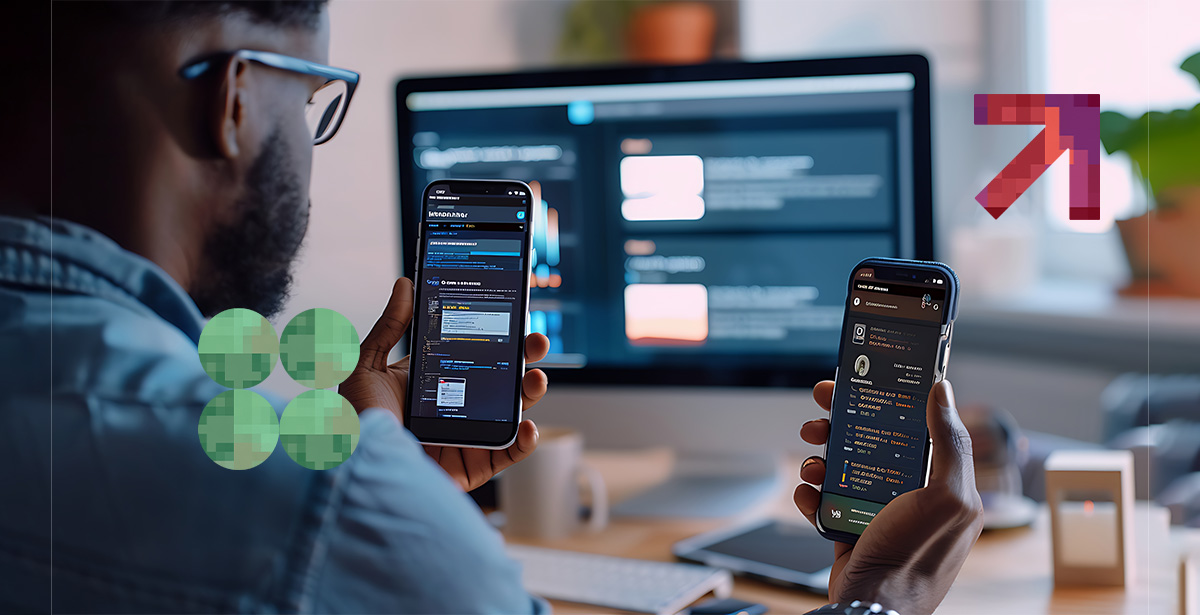7 Tips for Future-Ready Healthcare Application Development

Healthcare application development is changing fast with telehealth, wearables, AI, and stricter data laws reshaping everything. Even patients themselves are bringing on change due to their higher expectations.
These factors contribute to the growth of the global healthcare app market at a 45% CAGR through 2030. However, if you wish to get the biggest share of this growth, your apps need to do more than just function. They need to lead.
If your app works today but can’t adapt, it won’t survive tomorrow. So, your goal should be to create an application built with flexibility, scalability, and resilience at its core. One that’s architected to grow with innovation, designed to integrate new technologies, and developed with the agility to respond to new demands.
But Why Future-Proof Your Healthcare Apps
Your business may have more to lose by building a healthcare application that’s suitable only for current times.
Healthcare is going through a digital shift. Tools like AI diagnostics and wearable monitors are now common. If your app can’t adapt, it’ll fall behind. It’s not just about features. Your app must connect with other systems. That’s called interoperability, and it’s a must in healthcare.
Apps that use open standards like HL7 FHIR can easily talk to electronic health records and third-party tools. This makes integration smooth. It keeps your app useful in the long run.
Your app also needs to grow with your users. If it slows down or crashes, people will stop using it. Future-ready apps scale without losing performance.
Security is another big deal. Cyberattacks are getting smarter. Your app needs flexible security that can adjust as threats change. Don’t forget the law. Healthcare rules keep changing. If your app can’t adjust, you risk non-compliance.
For example, the 21st Century Cures Act now requires open APIs. It also bans information-blocking. Apps need to respond fast to changes like this.
Lastly, building only for now can get expensive later.
Technical debt occurs due to shortcuts such as using outdated code, hardcoded integrations, or non-scalable architecture. These make systems harder to maintain, integrate, or upgrade. It also makes healthcare application development time consuming and expensive.
How to Make Great Health Apps You Can Use for Years
After learning about the ‘why’, it’s time to address the ‘how’. So, here are seven tips to build a health app that stands the test of time, and keeps delivering value for years to come.
1) Design for Compliance from Day 1
Healthcare apps handle personal data – lots of it. HIPAA demands encryption, audit logs, secure storage. To pull this off, U.S. hospitals use automated CI/CD pipelines to ensure every update passes security checks before release.
For example, industry experts note that a healthcare CI/CD pipeline automates software testing, security checks, and deployments. As a result, every update is scanned for vulnerabilities and compliance issues before going live, avoiding last-minute delays.
Example: A U.S. hospital app might store patient records and scheduling. To be future-proof, developers can implement encrypted FHIR APIs (per ONC rules) and include an audit log.
If a new data-breach law or HIPAA change emerges, they can update the CI/CD policy and redeploy quickly without a major rewrite.
2) Use Modular Architecture
Modular architecture is a design approach where a system is divided into independent, interchangeable modules that function cohesively when integrated. Think LEGO blocks; each feature is self-contained.
This approach helps teams scale services like video, messaging, modules independently. Want to replace health care app development with AI triage? Easy.
Microservices also allow using different technology stacks for different needs. For instance, you can add real-time monitoring with Go or write a machine learning service in Python.
Their biggest benefit though is making it easier to comply with evolving regulations while maintaining operational flexibility. Teams can update the module that handles billing or privacy without touching the UI module, reducing risk.
A few best practices to keep in mind are –
- Use container orchestration so services can run on premises or in the cloud.
- Keep a clean API layer; adopt standards such as HL7 FHIR for data exchange so that modules interoperate.
- Test each service independently.
3) Make Interoperability Non-Negotiable
Interoperability is non-negotiable in developing healthcare apps because it ensures seamless data exchange. This, in turn, enhances care coordination, patient safety, and regulatory compliance.
Without interoperability, you’ll have fragmented systems that can cause errors, inefficiencies, and hindered access to critical health information. These directly impact patient outcomes and trust in digital health solutions.
To ensure that you get this right, keep these best practices in mind –
- Use FHIR APIs for patient data.
- Implement SMART on FHIR for authentication when integrating with EHRs.
- Test against multiple EHRs or data sources early.
- Build mapping for common standards such as ICD-10 or SNOMED.
- Ensure that APIs follow ONC’s guidelines to avoid costly re-engineering later.
4) Think AI and Emerging Tech from the Start
AI in healthcare application development isn’t science‑fiction; it’s real. A 2025 AMA survey found U.S. doctor adoption of AI nearly doubled in one year.
And these integrations can vary in form, from predictive patient alerts to smart appointment booking. You can also go beyond these. For instance, you can have a diabetes app that uses an ML model to predict blood sugar trends and alert patients.
AI aside, consider integrating IoT wearables. Future patients will definitely appreciate if they can sync their fitness tracker or glucose monitor with your app.
A few things to keep in mind are:
- Collect anonymized usage data (with consent) to train future models.
- Offer APIs for device integration.
- Keep UI designs flexible (e.g. modular screens) so new AI-driven features like voice assistants or AR instructions can be slotted in.
5) Prioritize UX and Accessibility
You shouldn’t take user experience (UX) and accessibility for granted or else your apps won’t be resilient, user-centered, and adaptable to future demands.
Good UX design improves patient engagement, encouraging regular use and ultimately long-term adoption. This is especially important for chronic care and preventive health.
Your UX design can also help you improve scalability, allowing your app to adapt more easily to new features, devices, and technologies.
As for accessibility, it promotes inclusive access while helping you meet accessibility standards such as ADA.
Together, accessibility and UX ensure your app’s global reach. They broaden the user base across demographics, languages, and regions.
Here are some quick wins to get this tip right –
- Use high-contrast text, support screen readers, and simplify navigation. This is both legally safer and expands your market.
- Conduct user testing with real patients and clinicians.
- Prioritize key patient tasks such as appointment booking, messaging, record lookup to minimize clicks.
- Provide multi-language support to win more people over.
6) Go Cross‑Platform
Cross-platform development boosts flexibility, efficiency, and longevity in many ways. In addition to expanding your reach by supporting multiple devices, it reduces the costs associated with development and long-term maintenance.
Cross platform apps also speed up delivery, ensure a unified user experience, and make it easier to integrate future technologies or pivot to new platforms.
Just remember to carefully tailor UI and security measures to each OS you wish to target.
For instance, a medication reminder app might use Android’s flexible notification system to gently nudge users, Meanwhile, iOS uses health-kit integrations for tighter Apple Watch support.
To ensure your medical app development is on the right track in this regard, here are some tips –
- Use cloud-based backend services as they ensure scalability, reliability, and easier maintenance.
- Implement real-time data sync to ensure data is instantly available across all devices and platforms.
- Separate business logic from UI. This modularity supports faster updates, simplifies cross-platform development, and ensures long-term adaptability to regulatory or technology changes.
- Monitor analytics across platforms for added insight.
7) Commit to Ongoing Maintenance
Future-ready apps aren’t launched and forgotten. This is an ongoing investment that’ll require you to keep healthcare app development services on your speed dial.
So, you’ll need to plan ongoing maintenance to fix bugs early, address new vulnerabilities, adapt to OS changes, support new devices, and optimize performance.
Here are some best practices to help you with future maintenance –
- Some CI/CD pipelines can help you automatically flag new OS or regulatory changes. Use feature flags to stage rollout, and monitor analytics so you catch new issues fast.
- Build time into your roadmap for compliance reviews.
- Test for backward compatibility with old data to avoid inconveniencing users when the app updates.
- Document your architecture and code so new team members can onboard fast.
- Keep dependencies up-to-date, and plan for 6-monthly or annual reviews of core libraries and components.
Looking for a Reliable Healthcare Application Development Partner?
DPL IT offers full‑service healthcare application development –
- HIPAA-compliant, secure cloud solutions
- Android and iOS native and cross-platform support
- CI/CD workflows for fast updates
- AI and wearable integrations
- UX testing and accessibility design
Whether you’re launching a new telehealth platform or improving an existing patient portal, we bring U.S. healthcare insight plus agile development expertise.
Let us know what you have in mind in the form below.





